Evolutionary Ecology
The department of Evolutionary Ecology gathers complementary skills in behavioural ecology, population dynamics, population biology, community ecology, and methodology (statistics and modelling). The research done in the department aims at studying how animal species evolve in a changing world by understanding the causes of the evolution of traits, adaptations and interactions. For that, we consider different levels of organization from individuals to populations and communities. Because organisms cannot be considered isolated from other biotic factors, we consider pathogens but also competing species within communities.
We study how individuals adapt to their environments that are largely impacted by anthropic pressures, and how life history traits and behaviour evolve in response to these pressures. Although we mainly focus on phenotype, we more and more consider the mechanistic link between the genotype and the phenotype. We develop the theoretical framework of our discipline through a conceptual and modeling approach. In parallel, we test hypotheses that arise from theoretical predictions through experimental, comparative and observational approaches on different biological models (insects, birds, mammals). Experimental approaches are developed in the laboratory (insect model) and in natura (bird, insect and mammal models). Observational and comparative research is mainly concerned with vertebrates. Our approaches are also, and increasingly, interested in the mechanisms of adaptive responses. In addition to the classical approaches of demographic analysis and trait change, methods of ecophysiology, chemical ecology and molecular biology are used.
Our department hosts several long-term studies of wild populations of different species. These long-term studies offer a valuable way to understand how biotic and abiotic factors affect individuals’ life history traits, and the functioning of populations in natura. Five populations of mammalian species are thus monitored for several years (more than 40 years on roe deer, 30 on Alpine marmots, 25 years on cats, 16 years on zebras, and 20 years on impala). Two of our study sites (La Sassière in Vanoise National Park (Alpine marmots) and Hwange National Park) have been certified as “Site d’Etude en Ecologie Globale” (SEEG), and two (ZA “Hwange” and ZA “Antarctic and sub-Antarctic”) were certified as “Zone Atelier” by the CNRS.
The department of Evolutionary ecology is also largely involved in training activities. Lastly, we also have strong socio-economic relationships. Indeed, because we address questions of major societal interest (global warming, public health) we tightly collaborate with socio-economic partners (Office Français de la Biodiversité, Vanoise National Park, Hwange National Park in Zimbabwe, Office National des Forêts, etc.) and participate to general public and media events.
Publications
Display of 31 to 60 publications on 2453 in total
Impacts of neonicotinoids on biodiversity: a critical review
Environmental Science and Pollution Research . 32 ( 6 ) : 2794–2829
Journal article
see the publicationMain conclusions and perspectives from the collective scientific assessment of the effects of plant protection products on biodiversity and ecosystem services along the land–sea continuum in France and French overseas territories
Environmental Science and Pollution Research . 32 : 2757–2772
Journal article
see the publicationTaenia martis in an Alaotran gentle lemur ( Hapalemur alaotrensis ): The importance of molecular identification
Veterinary Record Case Reports . 12 ( 4 ) : e915
DOI: 10.1002/vrc2.915
Journal article
see the publicationSpatial behaviour, age, and sex correlate with co-infection patterns in roe deer
International Congress in Ecology & Evolution - SFE2 . : 2
Conference paper
see the publicationMorphological Traits Are Not Consistently Related to Population Size in Four Migratory Caribou Populations Across North America
Ecology and Evolution . 14 ( 10 )
DOI: 10.1002/ece3.70468
Journal article
see the publicationIntransitive competition: an important mechanism?
SFE2 International congress in ecology and evolution .
Conference paper
see the publicationRisk of Culicoides dispersal by the wind; Case study with Epizootic Hemorrhagic disease virus in France
3rd Modelling in Animal Health international conference .
Conference paper
see the publicationRisk of Buetongue introduction by the wind: predictable?
9th Annual Symposium of Animal Health organized by Sciensano .
Conference paper
see the publicationHarmonisation of the diagnostic performances of serological ELISA tests for C. burnetii in ruminants: optimal positivity thresholds and performance reassessment
Preprint
see the publicationGetting to the root of delays in reporting African swine fever suspected cases
SVEPM Conference .
Poster
see the publicationThe Influence of Age, Sex, and Season on Hematological Parameters in a Captive Population of Former Laboratory Chimpanzees (Pan troglodytes)
American Journal of Primatology . 87
DOI: 10.1002/ajp.23703
Journal article
see the publicationCross-transmission of resistant gastrointestinal nematodes between wildlife and transhumant sheep
Peer Community Journal . 4 : e103
Journal article
see the publicationImpacts of Artificial Light At Night on immunity in the common toad.
BES Annual Meeting 2024 . : https://www.britishecologicalsociety.org/content/bes-annual-meeting-2024/
Poster
see the publicationImpacts of Artificial Light At Night on immunity in the common toad.
Congrès International de la Société Française d’Écologie et Évolution 2024 . : https://sfe2-2024.fr/en
Poster
see the publicationDemande d’avis relatif à l’évaluation des risques pour la santé publique et la santé animale liés à la transmission inter-espèces (être humain-animal et animal-être humain) des virus influenza en élevage porcin et les mesures de surveillance
: 306 p.
Report
see the publicationMolecular Evolution of the Ovgp1 Gene in the Subfamily Murinae
Animals . 15 ( 1 ) : 55
DOI: 10.3390/ani15010055
Journal article
see the publicationTrophic differentiation between the endemic Cypriot mouse and the house mouse: a study coupling stable isotopes and morphometrics
Journal of Mammalian Evolution . 31 ( 4 ) : 44
Journal article
see the publicationProtein expression patterns and activities of two metabolic enzymes (CS and LDH) highlight a disturbance in the metabolic pathways of tree frogs living in the Chernobyl Exclusion Zone
6th International Conference on Radioecology & Environmental Radioactivity .
Poster
see the publicationAOP in the context of radioecology: challenges and insights
ERPW2024 - European radiation protection week .
Conference paper
see the publicationDécrypter les mécanismes de reprotoxicité radio-induite chez l'amphipode Gammarus fossarum
Société d'écotoxicologie fondamentale et appliquée (SEFA) .
Conference paper
see the publicationNeonatal antipredator tactics shape female movement patterns in large herbivores
Nature Ecology & Evolution .
Journal article
see the publicationCan plants build their niche through modulation of soil microbial activities linked with nitrogen cycling? A test with Arabidopsis thaliana
New Phytologist . 243 ( 2 ) : 620-635
DOI: 10.1111/nph.19870
Journal article
see the publicationAssessing mutualistic metacommunity capacity by integrating spatial and interaction networks
Theoretical Population Biology . 156 : 22-39
Journal article
see the publicationA set of ecosystem service indicators for European grasslands based on botanical surveys
Grassland Research . 3 ( 1 ) : 43-56
DOI: 10.1002/glr2.12069
Journal article
see the publication19. Colistin resistance in pigs – assessing the effectiveness of mitigation measures
Animal. Science proceedings . 15 ( 4 ) : 268-269
Journal article
see the publicationThe time of infection matters: seasonal interplay between host and pathogen drives epidemic dynamics
Oikos .
DOI: 10.1111/oik.10750
Journal article
see the publication
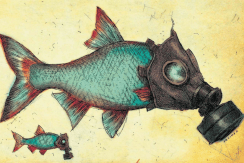
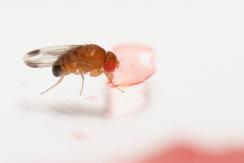
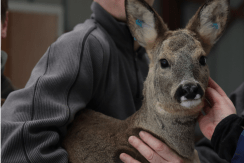
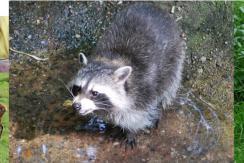
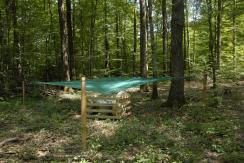
You also, comment on this article